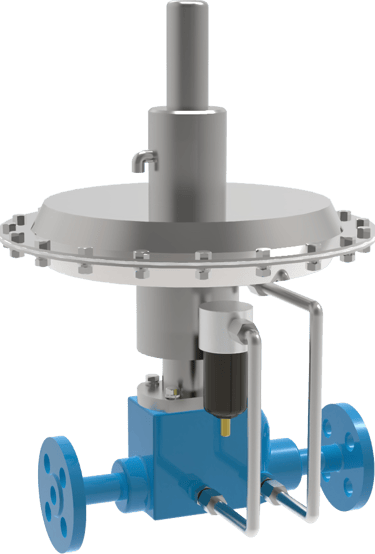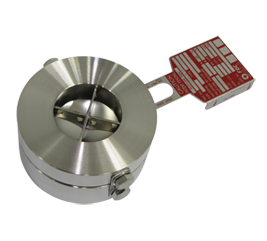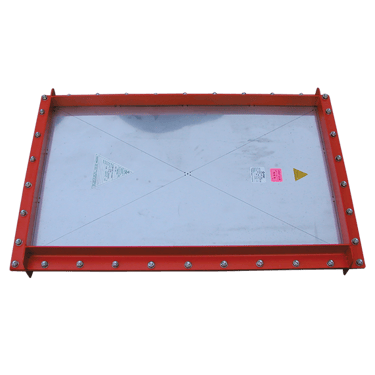N2 Blanketing Valves
Models: DST-100 and DST-200
Capacity: DST-100; 179 to 1060 Nm3/hr Nitrogen, DST-200; 465 to 2760 Nm3/hr of Nitrogen.
Sizes: DST-100; 1/2", 3/4" and 1" (DN 15, 20 and 25), DST-200; 1 1/2" and 2" (DN 40 and 50), with ASME 150# flanges, other connections available as required.
Pressure Setting: 30 to 5000 mm w.c.
Body Material: SS 304 and SS 316, with different trims.
Minimum Inlet Pressure: 1.5 kg/cm2 (22 psig)
Operating Temperature: -20 to 149oC.
Standard & Certification: API 200 7th Edition - "Calculation for the highest requirements with no flame arrester for iner-gas-blanketing.
Rupture Discs and Explosion Panels
Materials: CS, SS 304, SS 316L, Duplex, Aluminum, Nickel, Inconel, Monel, Hastelloy, Titanium, Tantalum, Graphite, Teflon.
Maximum Usage Temperature: Depending on the material; from 120ºC (Aluminum) to 592ºC (Inconel).
Standard & Certification: ASME Sec. VIII Div. 1, ISO 6718, ISO 6126-2-6, API RP520, Kosha Safety Certification.


N2 BLANKETING VALVES, RUPTURE DISCS AND EXPLOSION PANELS
KSPC


At Aceinteca, we supply these devices manufactured by KSPC with specialized technical support, ensuring proper selection based on your project’s operating conditions and regulatory requirements.
Contact us and share your application details. Our team will recommend the most suitable solution to ensure the safety, reliability, and efficiency of your storage system.
Korea Steel Power Corp. (KSPC) is an internationally recognized manufacturer of safety devices for storage tanks. Among their specialized products are gas blanketing valves and rupture discs, both designed to safeguard tank integrity and stored product against extreme pressure variations or inert atmosphere requirements.
Gas blanketing valves regulate the tank’s internal pressure through controlled injection of inert gas (typically nitrogen), preventing explosion risks, oxidation, or contamination. Rupture discs serve as passive safety devices, instantly releasing excess pressure when a critical threshold is exceeded, thus preventing major structural failure.
These devices are manufactured in compliance with international standards such as API 2000 and are available in corrosion-resistant materials including stainless steel, special alloys, and protective coatings.
Details
engineering
info@aceinteca.com
© 2024. All rights reserved.
Technical Information for Tank Equipment Courtesy of World Bridge Industrial Co. Ltd.
Technical Information for Tanks Protection Devices Courtesy of Korea Steel Power Corp.
Technical Information for Bolted Tanks Courtesy of Center Enamel.
Glass Fused Steel Bolted Tanks
Stainless Steel Bolted Bolted Tanks
Aluminum Suspended Deck for Cryogenic Tanks.
Aluminum Rolling Ladder for External Floating Roofs
WhatsApp +58 416 6289796
